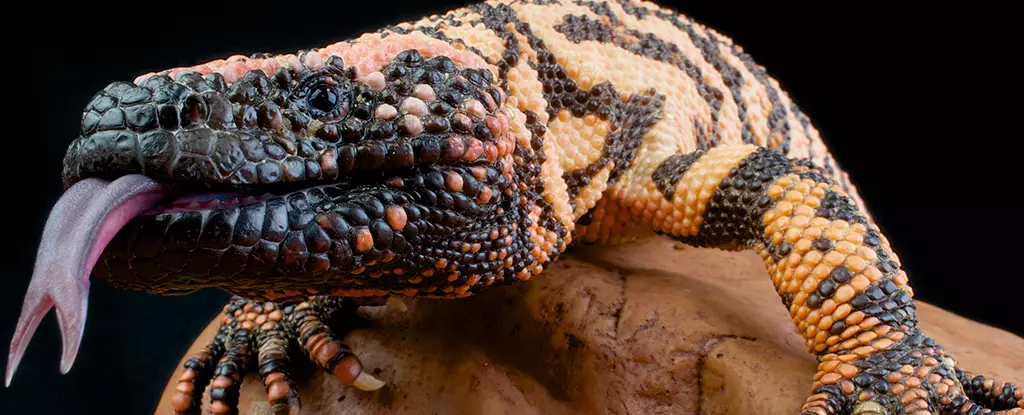Nature, often perceived as a benign entity, harbors an arsenal of lethal compounds interwoven into the biology of certain species. Among these, the venom of the Gila monster stands out not only for its toxicity but also for its profound implications in modern medicine. The realization of how a venomous creature can offer vital therapeutic avenues underscores the intricate relationship between nature and human health. The case of GLP-1 agonists, such as Ozempic and Wegovy, illustrates this paradox where danger morphs into a beacon of hope.
In the late 20th century, endocrinologist Daniel Drucker embarked on a mission to find a human-compatible hormone mirroring the effects of glucagon-like peptide-1 (GLP-1). His exploration was pivotal in bridging a gap in diabetes and obesity management. Collaborating with professionals across specialties, Drucker unearthed the potential of a protein named Exendin-4, isolated from Gila monster venom. This protein’s extended biological half-life made it an attractive candidate for developing drugs that would effectively modulate appetite and regulate blood glucose levels in humans.
The Path from Discovery to Treatment
After extensive research and development, Exendin-4 paved the way for the creation of a synthetic GLP-1 agonist, marking a significant milestone in diabetes treatment by 2005. The swift advancement from venomous bite to a therapeutic solution reflects our capacity for ingenuity in the face of adversity. While the Gila monster injects venom through its bite, we have, in turn, turned this venom into a life-affirming medicine, demonstrating a strikingly intricate dance between nature’s toxicity and human necessity.
This narrative of transforming venom into medicine is not isolated to the Gila monster; it reverberates through multiple species known for their toxic capabilities. The Brazilian viper, for instance, has provided the world with Lisinopril, a leading drug combating hypertension and heart-related ailments. The viper’s evolutionary strategy, designed to incapacitate prey efficiently, inadvertently led to this remarkable contribution to human pharmaceuticals. Here, we witness the duality of venom, both destructive and immensely beneficial.
Venturing beyond reptiles and snakes, we discover the ancient Caribbean sponge, Tectitethya crypta, which reveals another fascinating layer to this narrative. Lacking a conventional immune system, these sponges have evolved unique molecules that safeguard them from external threats. The nucleosides discovered within stimulated the creation of cytarabine, a vital chemotherapy drug utilized in the treatment of leukemia and non-Hodgkin’s lymphoma.
Such discoveries urge us to reflect on the wealth of knowledge nestled within our natural world. The delicate balance within ecosystems frequently conceals answers to pressing health challenges. The wisdom derived from sponges not only opens avenues in oncology but serves as a testament to the potentially life-saving properties hidden within the biodiversity that thrives around us.
Illuminating the Dark: Venom and Cancer Research
As medical researchers continue to probe into the depths of nature’s toxins, breakthroughs extend into oncology. The story of oncologist Jim Olson encapsulates this innovation. After a grueling surgery left lingering cancer cells behind, Olson turned to a venom produced by the deathstalker scorpion, Leiurus quinquestriatus, in search of a solution. The resultant peptide, chlorotoxin Cy5.5, possesses the unique ability to illuminate malignant cells when exposed to near-infrared light.
This remarkable discovery has the potential to revolutionize surgical practices and bolster cancer visualization methods. Imagine a world where oncologists could clearly delineate cancerous tissues from healthy ones during surgery, thanks to a luminous marker derived from a creature that is, by nature, lethal. The juxtaposition of extreme danger and medical advancement paints a vivid picture of nature’s dual role as both a destroyer and a savior.
While the avenues illustrated above present significant advancements in modern medicine, they also evoke critical considerations concerning biodiversity and conservation. The potential for medical innovation beckons further exploration of various species, yet many are endangered or diminishing due to human activities. If we neglect to preserve these habitats and their inhabitants, we may inadvertently extinguish the prospect of potential cures before they can be discovered.
The examination of venomous creatures reveals a profound narrative about the interconnectedness of life on Earth. The potential of toxic components can yield groundbreaking treatments and advance our understanding of health and disease, but they also serve as reminders of our responsibility to the environment. By safeguarding the natural world, we not only secure the future of biodiversity but also preserve the precious resources it harbors for generations to come. Nature has always been our most enigmatic ally; it’s up to us to listen and learn before it’s too late.


Leave a Reply